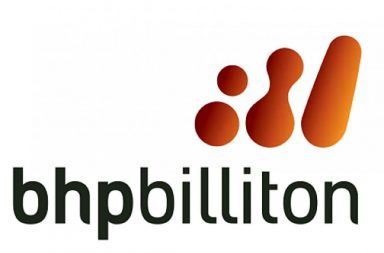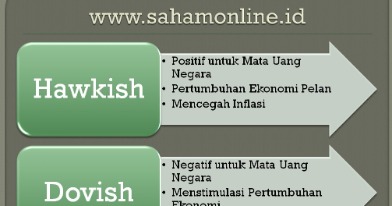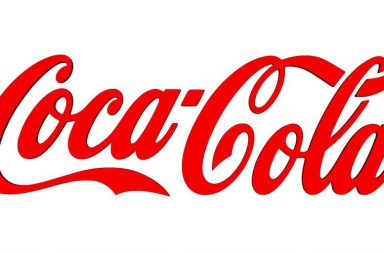
For example, if a rectangle is $2 in height (resistance price minus support price), and the price breaks to the downside, the estimated price target is the support price minus $2. If the price breaks higher, add $2 to the resistance price. The flag can sometimes just be sideways, and this is usually called a rectangle. https://g-markets.net/ Wedges are another form of continuation pattern since they also signal a pause in the current trend. They are somewhat similar to triangles since they are identified by two converging trend lines. Like the bullish rectangle, breakout, positional, and range, traders can find the bearish rectangle chart pattern useful.
The bullish gapping play provides traders with a strong signal that the bullish momentum is expected to continue. Therefore, the theory suggests that a trader opens a buy trade after the fifth candle is formed. A stop-loss order can be placed below the fifth candle. A bullish gapping play structure occurs when there is a large upward candle, followed by several small candles forming at almost the same level and a large bullish candle with an upward gap. Small candles reflect a period of hesitation and must be in the upper area of the previous candle.
Triangle patterns usually have a minimum of four to six reversal points which are required to form the shape of the actual triangle. The more times the triangle is tested the more durable it becomes and the stronger the breakout will be. The formation usually lasts about one to three months long. The bullish rectangle pattern’s beauty is that both range traders and breakout traders will find it tremendously useful. Here, we have been in an obvious downtrend for hours already, in a tight and steep channel.
As a rule, a bullish pennant continues the current bullish trend. After the horizontal upper boundary of the pennant is broken, a price movement equal to the size of the pennant is possible. Bearish continuation patterns appear midway through a downtrend and are easily identifiable. The bearish versions of the similar patterns introduced above have the same impact but in the opposite direction.
Wedges
The up trendline is drawn by connecting the ascending lows. Conversely, a trendline that is angled down, called a down trendline, occurs where prices are experiencing lower highs and lower lows. Bear in mind that all patterns are subject to your own [or someone who’s providing signals, if you’re trading based on signals] interpretation.
- After the horizontal upper boundary of the pennant is broken, a price movement equal to the size of the pennant is possible.
- Often there will be pauses in a trend in which the price action moves sideways, bound between parallel support and resistance lines.
- The descending triangle is basically a mirror image of the ascending triangle.
- The patterns can be bullish or bearish and can help you find the right trading opportunity if you know the right way.
The optimal number of these pullback candles should be 3, though 2, 4 or 5 correction candles can also be observed. It’s important that these bearish candlesticks do not close below the opening level of the first big bullish candle. The final day opens within the body of the top bullish candlestick and closes within the body of the lower bullish candlestick, filling the gap between the two candlesticks.
Continuation Patterns Every Trader Should Know
It is often referred to as a trend continuation pattern. In practice, a trend reversal is possible with a triangle. The pattern is finally confirmed after a strong break of the consolidation range, which leads to a continuation of the previous trend development. Trend continuation patterns usually work out during a short or medium-term period. The basis of successful trading is understanding fundamental market patterns. Patterns such as flags, pennants and triangles are used to determine or confirm the continuation of the price movement.

It usually takes place in a downtrend, and it signals that the impending breakdown will continue the overall bearish trend. Unlike the ascending and descending triangles, which are continuation patterns, the outcome of the symmetrical triangle is difficult to predict, as the breakout can occur in both directions. There are three types of the triangle pattern – ascending, descending, and symmetrical. trend continuation patterns The ascending triangle is a bullish formation that occurs in a mid-trend and signals an impending continuation of the existing trend. It consists of two converging trend lines, where the upper (resistance) trend line is flat, or nearly flat, while the lower trend line (support) is ascending. It signals that the price action is consolidating with the higher lows pushing for a breakout to the upside.
ABCD or Gun Pattern
Gaps occur when there is a significant difference between the closing price of one candlestick and the opening price of the next. Gaps tend to occur at the opening of a trading session, reflecting a change in sentiment overnight. At some point during the spike, some traders will close their positions to take profits. So you might get a selling period, where the stock’s price drops a bit. But why does the price go through a period of consolidation?
How to Trade Forex Wedge Patterns – Benzinga
How to Trade Forex Wedge Patterns.
Posted: Mon, 28 Aug 2023 07:00:00 GMT [source]
Once the consolidation period happens, look for confirmation of the trend’s continuation. Descending TriangleThis is usually formed amid a downtrend for existing direction confirmation. StocksToTrade in no way warrants the solvency, financial condition, or investment advisability ofany of the securities mentioned in communications or websites. In addition,StocksToTrade accepts no liability whatsoever for any direct or consequential loss arising from any useof this information.
Trend Continuation Patterns: Basic Working Principles
The candle has a long tail — at least twice as long as the body. Usually, pennants are said to be flying at half-mast. This is because pennants usually appear at about the halfway point of the whole move. So the distance of the initial price move is approximately the same as the proceeding price move after the breakout. Often we can use the height of this flagpole (i.e. the initial move) to estimate the size of the breakout move.
Pennants are similar to a triangle, yet smaller; pennants are generally created by only several bars. While not a hard and fast rule, if a pennant contains more than 20 price bars, it can be considered a triangle. The pattern is created as prices converge, covering a relatively small price range mid-trend; this gives the pattern a pennant appearance. Continuation patterns organize the price action a trader is observing in a way that allows them to execute a plan to take advantage of the movements.
As with any technical analysis pattern, tool, or indicator, however, these patterns should not be employed alone, instead being paired with multiple others to verify predictions. Continuation patterns are some of the easiest to spot, with flag patterns in particular being good for beginner traders. To help with this, a trader can use market, limit, and stop orders. Continuation patterns can be used over different time periods too and are therefore helpful for day traders or long-term traders, which are more common in the crypto space. However, continuation patterns are not fool proof, and should therefore be used in conjunction with other indicators.
What Are Bullish Continuation Patterns?
They can be both bearish and bullish, with the former showing a continuation of a downtrend and the latter showing a continuation of an uptrend. If you look at the chart with a strongly pronounced trend you can see places where the price has consolidated during its movements forming the same type of figures. These formations are trend continuation patterns which are often
used by traders for making decisions. Trend continuation patterns are formed during the pause in the current market trends, and mark rather the movement continuation than its reversal.

A continuation pattern signals a trend will continue, and a reversal pattern signals the trend will reverse. They occur when there is space between two trading periods caused by a significant increase or decrease in price. For example, a stock might close at $5.00 and open at $7.00 after positive earnings or other news. Horizontal or slightly sloped trendlines can be drawn connecting the peaks and troughs between the head and shoulders, as shown in the figure below.
Master Technical Analysis
Flags are generally short in duration, lasting several bars, and do not contain price swings back and forth as a trading range or trend channel would. Flags may be parallel or upward or downward sloping, as shown in below. Therefore, after a big fall, the bearish pennant provides a temporary pause in the downtrend for prices to consolidate and sellers to take profits. Prices soon breakout of the pennant and continue downward. The formation of the continuation patterns is said to be complete after prices break out and continue in the direction of the prevailing trend. After an initial bullish move, the price action consolidates within the two parallel lines before breaking out higher.
The final candle of this pattern gaps to the upside and it continues its upward movement to close above the trading range of any of the previous periods. Traders use chart patterns to identify stock price trends when looking for trading opportunities. Some patterns tell traders they should buy, while others tell them when to sell or hold. The borders of the flag pattern are directed against the main trend. This pattern usually appears after a strong price movement.
